Student Notable
Strategy & Research Award
Core77 Design Awards 2015
POST MORTEM 3.0
The Internet allows us, as 2.0 users, to amass a body of data that tells the story of our lives and that links us to one another. We use new technologies to feed our digital personae every day and so live out our virtual lives alongside our physical ones.But can we consider the Internet as an archive for our lives?
A few years ago, death meant that we lost a body, a physical presence. These days, we must also take into account the digital dimension attached to the deceased remains.
We therefore have to ask ourselves how digital technologies change the way we remember events and whether death loses its solidity and finality online.
In response to these questions, POST MORTEM 3.0 provides a questionnaire that each of us is free to fill in according to our values and beliefs, in order to determine whether or not one wants to be kept alive virtually after death. This choice must be made in our lifetime in order to avoid the decision having to be taken by those left behind.
The aim is to challenge us to (re)consider the place our virtual identity has in our life, personally, collectively, and historically.
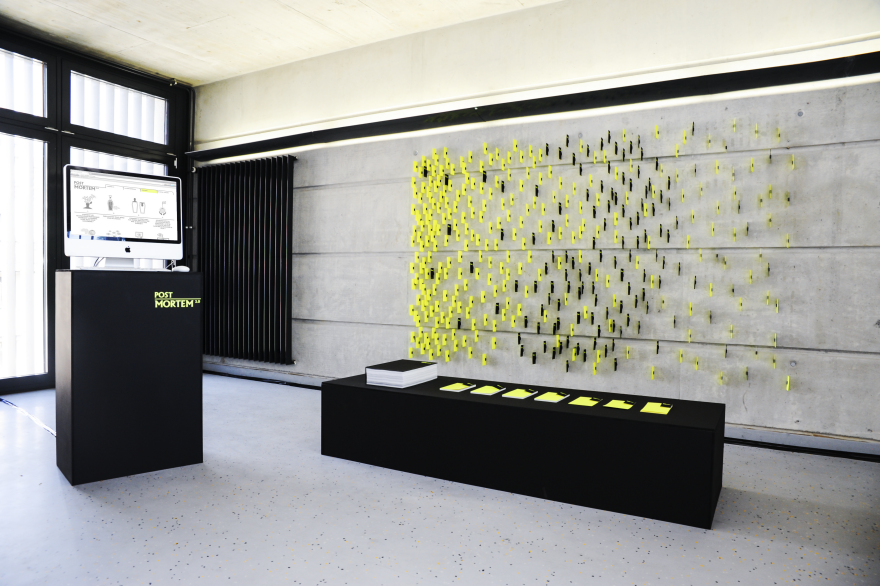 POST MORTEM 3.0
Installation
HEAD – Genève / Emilie Bonnet, 2014
POST MORTEM 3.0
Installation
HEAD – Genève / Emilie Bonnet, 2014
 POST MORTEM 3.0
Installation
HEAD – Genève / Emilie Bonnet, 2014
POST MORTEM 3.0
Installation
HEAD – Genève / Emilie Bonnet, 2014
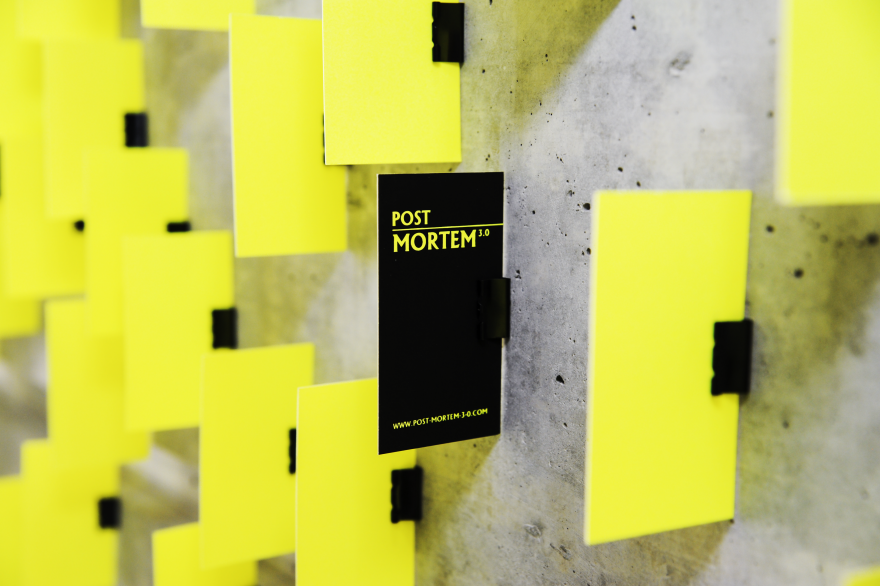 POST MORTEM 3.0
Installation
HEAD – Genève / Emilie Bonnet, 2014
POST MORTEM 3.0
Installation
HEAD – Genève / Emilie Bonnet, 2014
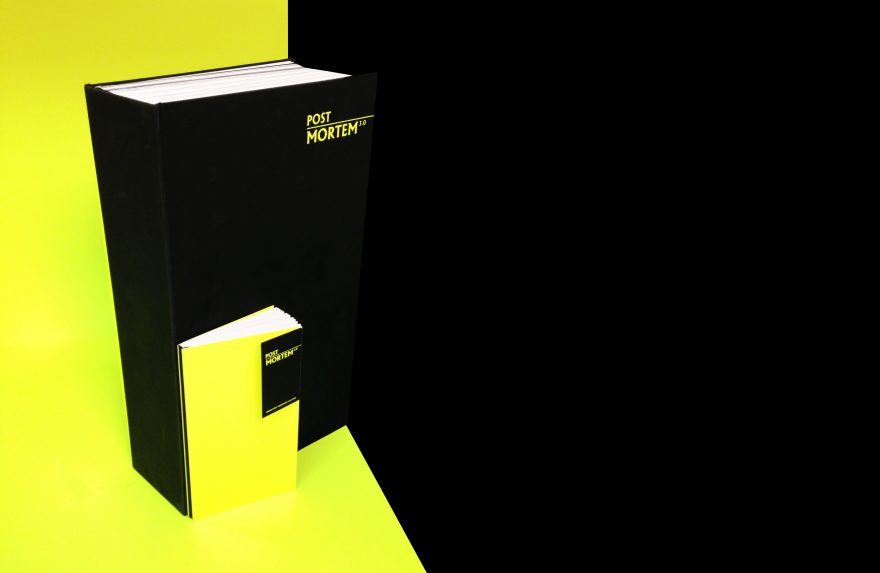 POST MORTEM 3.0
Edition Post Mortem?3.0, format?: 230?x?410?mm, 834 pages
POST MORTEM 3.0
Edition Post Mortem?3.0, format?: 230?x?410?mm, 834 pagesBooklet Post Mortem?3.0, format?: 115?x?205?mm, 70 pages
Océane Izard, 2014
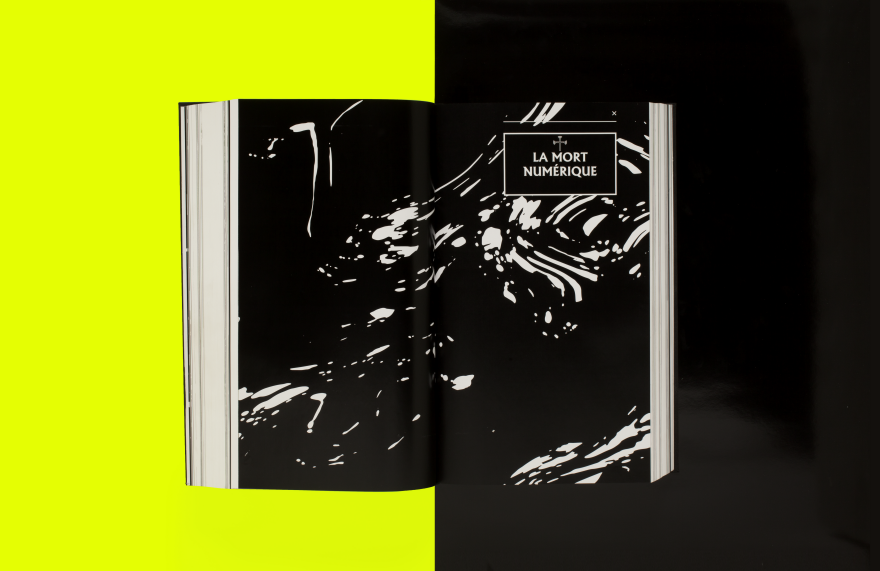 POST MORTEM 3.0
Edition Post Mortem?3.0, format?: 230?x?410?mm, 834 pages
Océane Izard, 2014
POST MORTEM 3.0
Edition Post Mortem?3.0, format?: 230?x?410?mm, 834 pages
Océane Izard, 2014
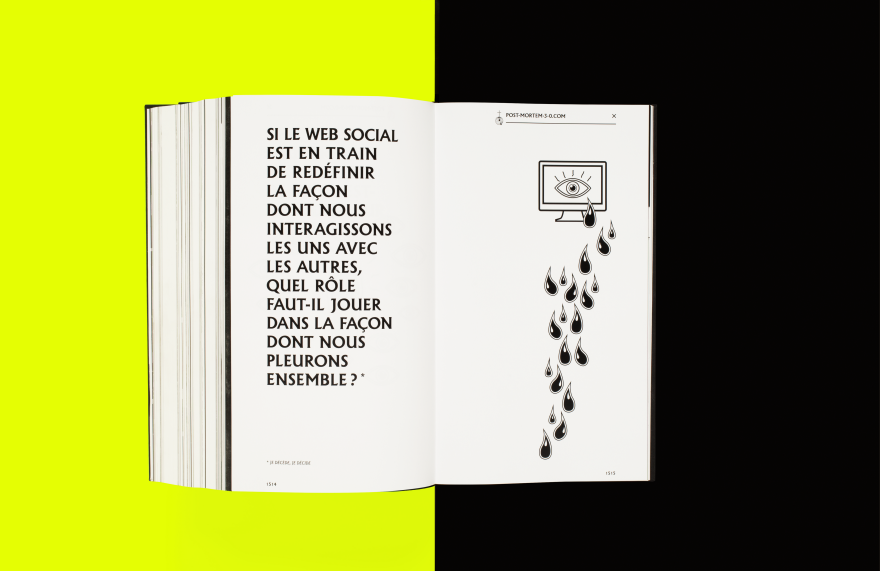 POST MORTEM 3.0
Edition Post Mortem?3.0, format?: 230?x?410?mm, 834 pages
Océane Izard, 2014
POST MORTEM 3.0
Edition Post Mortem?3.0, format?: 230?x?410?mm, 834 pages
Océane Izard, 2014
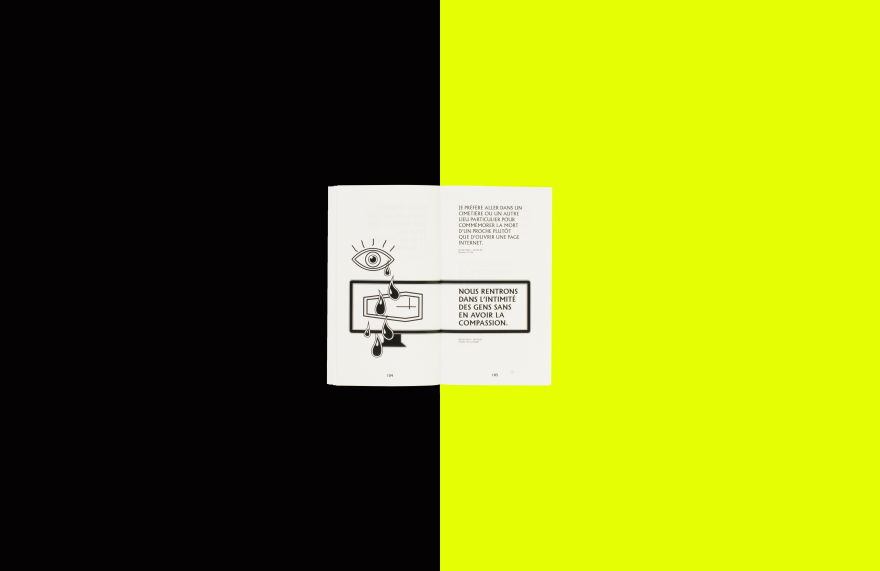 POST MORTEM 3.0
Booklet Post Mortem?3.0, format?: 115?x?205?mm, 70 pages
Océane Izard, 2014
POST MORTEM 3.0
Booklet Post Mortem?3.0, format?: 115?x?205?mm, 70 pages
Océane Izard, 2014
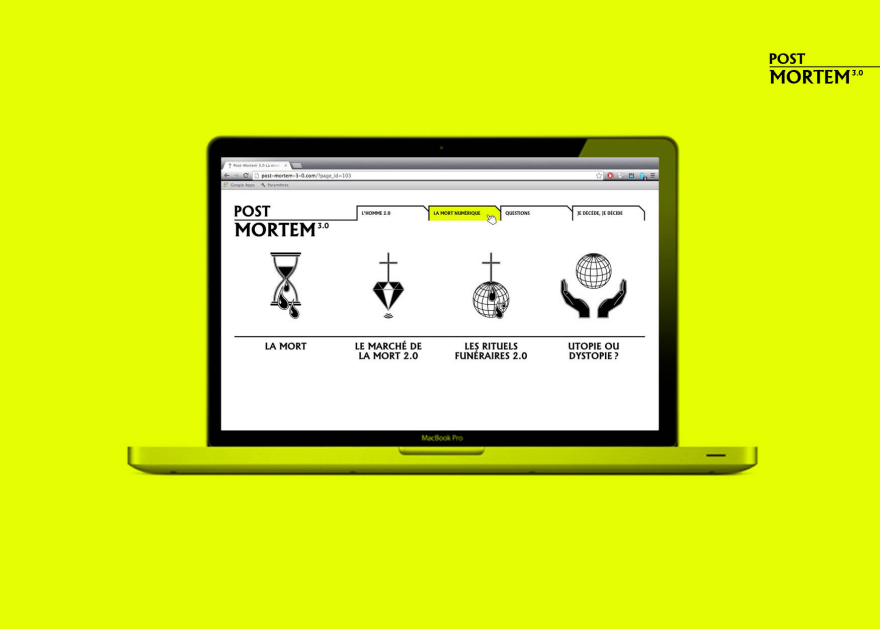 POST MORTEM 3.0
Website / www.post-mortem-3-0.com
POST MORTEM 3.0
Website / www.post-mortem-3-0.com
 POST MORTEM 3.0
Website / www.post-mortem-3-0.com
POST MORTEM 3.0
Website / www.post-mortem-3-0.com
POST MORTEM 3.0 is a foray into the issue of one’s digital death.
“3.0” does not signify technological advancement – or at least, no more than what we already have. Instead, it carries a temporal dimension. In other words, “3.0” is the future.
Do you know what becomes your digital data after your demise?
Previously, we had never asked ourselves that question. Our ignorance was staggering. It fuelled our curiosity and fascination for the subject, leading us on the first step towards making this project a reality.
We fashioned a survey for both the students and teachers around us, hoping to gather reactions and opinions on the theme. Diverse people brought equally diverse answers to our questions, all of which are available for consultation within our book. We discovered, amongst other things, that no less than 250 persons out of 300 did not have an inkling as to what happened to their digital data after their demise. Clearly, there was a need to make this knowledge available to the public.
As 2.0 users – that is, users of the social web – we amass an impressive quantity of information on a daily basis. Thanks to a variety of social medias and services online, we create during our lifetimes a virtual identity that is made to co-exist with our more tangible physical identity.
This virtual mini-me is a greedy child, and we are constantly feeding it through different mediums that are becoming ever faster, better, and easier, thus allowing our link with this creation to grow. We build an extra life through photos, videos, comments, or even the various online accounts, within which we pour our social, cultural and political preferences and ideals.
Is the Internet an archive for our lives? Do we have at our fingertips the chaotic summary of our existence, retracing every important event and fleeting mood?
We grow old. Our memories fade, but not online. Online, they endure. Online, we endure.
What becomes of our virtual life after our physical death?
Today, one can speak of a digital death. There are digital testaments, online condolences and commemorative pages. One can even say that the funeral rites themselves become digital.
A few years ago, we lost a body. Nowadays one must also take into account the deceased’s virtual identity. Although one may say this is an obvious comment to make, what impact does this second life have on us? How do these technologies change our memories, or even our way of remembering things?
Does Death itself lose its certainty and solidity online?
In order to further our understanding, we took a look at opinions from men and women from different ways of life. The students spoke. The teachers spoke. The anthropologists, the sociologists, the designers spoke. Those closely linked to death, in associations or otherwise, spoke. They all spoke. And they all found their way into our book.
This collection is an imposing object. Yet this heavy book, heaving with opinions and facts, was simply an inventory and a stepping-stone for our work. We had merely waded in the shallow end. It is then that we turned yet again within ourselves. What was to be our role, as designers, in Death’s afterlife?
We noticed that our method had centered around information and, more importantly, informing others. We noted that people were mainly aware of their implication on the web and their role as actor, producer and consummator but were nonetheless relatively in the dark when it comes to what happens to their personal data after death.
We thus took the decision to put the people touched by virtual death (both the deceased and their close ones) at the centre of our project. We wished to work on informing people of the possibilities that a virtual life online could offer after their demise.
Creating an online platform only seemed natural:
www.post-mortem-3-0.com facilitates the exchange of information. Two distinct chapters lead the reader in the meanders of our project: Man 2.0 and the digital death. Each of these chapters has sub-chapters that are rich in information thanks to our references, which were, amongst other, the “matrix” of our development.
This web platform is to be updated autonomously through contributions. Each visitor has the possibility to answer and react to a number of questions and to share his thoughts on social medias such as Facebook, Twitter, etc.
The publication of such content on the web is equally a way to see Web 2.0 as a tool, and therefore to force us to question our usage of these new technologies and the influence they could have on our future.
POST MORTEM 3.0 proposes a card, entitled “my demise, my decision”. Each is free to fill it in following one’s values and convictions in order to decide whether or not one wishes to be maintained virtually alive after one’s death. This choice is to be made while still alive in order to avoid the decision to be taken by those that remain. This process forces us to (re) consider what place our virtual identity holds in our lives.
Accompanying this card is a number of responses obtained during our survey in order to furnish the reader with examples so as to better apprehend the subject and make a decision.
These cards took on another role when came the time to show caste our ideas, showing the versatility of the project. Indeed, we used them within a disposition to translate our theme spatially. The yellow cards represented those that had yet to comment on the subject.
Yet this card is merely symbolic. It does not resolve anything when it comes to the large number of complex steps one has to go through in order to close all accounts. Indeed, each service and social media has its own legislation in the case of death, making the procedure for the family and friends time-consuming and difficult.
Our project forces us to face the many ramifications linked to our virtual behaviour. It is here to trigger an individual thought process. Through our work, the user becomes more conscious of his/her place on the Internet.
We are convinced that it is essential to start asking these questions now and to imagine no longer being subdued to a life-style founded on the immediacy of these new technologies.
Being conscious of one’s online actions will allow each and every one to lead one’s life normally and to control one’s virtual identity, both during life and after one’s death.
The digital you must not betray who you truly were during your organic time on Earth.
By Océane Izard & Marion Erard
quite a courageous question to be asking
We thought this was a really valid question to ask and we liked the notion of organic life vs. digital life and the multi modal digital platform. It was thought provoking.
There are many other questions that could be asked as an extension of the thinking that was offered in this particular project. It's quite a courageous question to be asking.